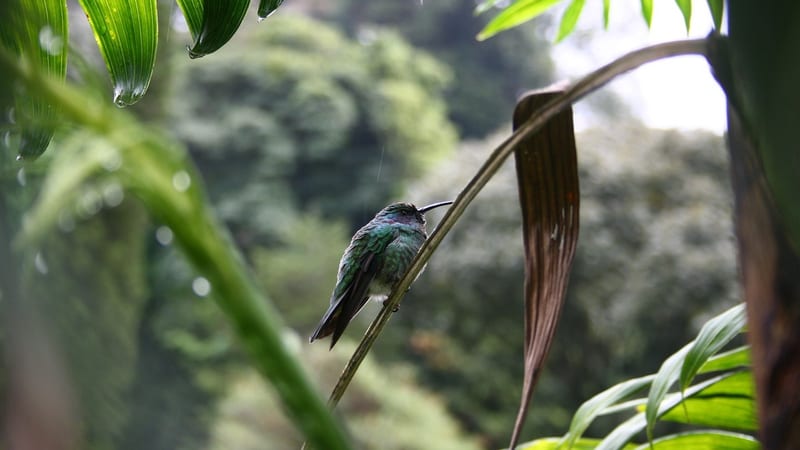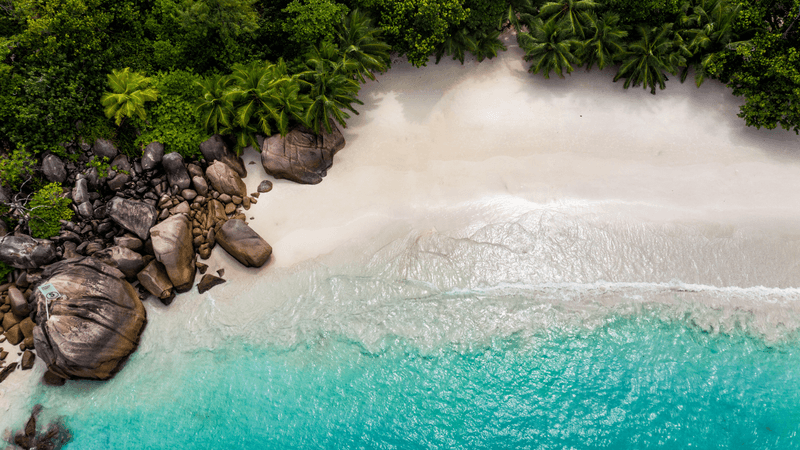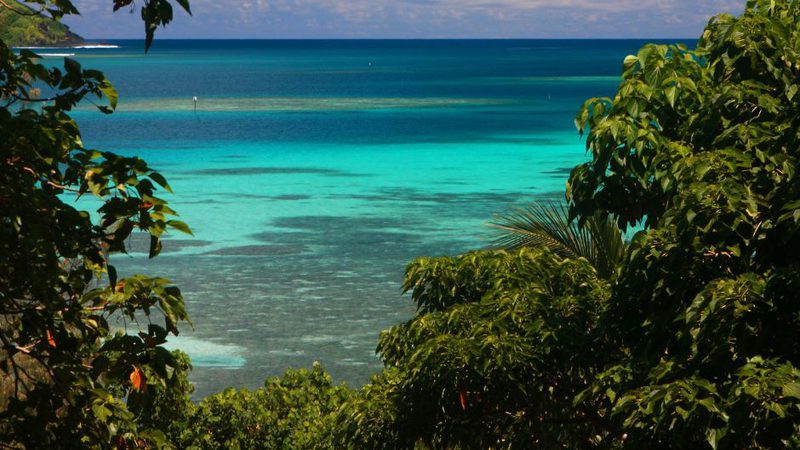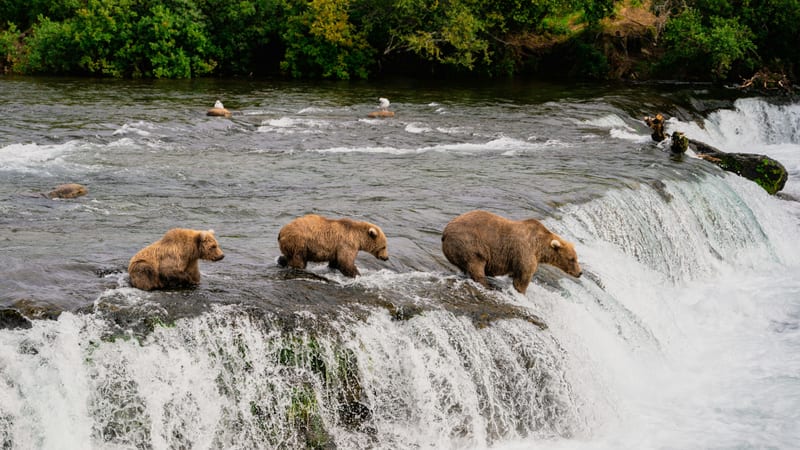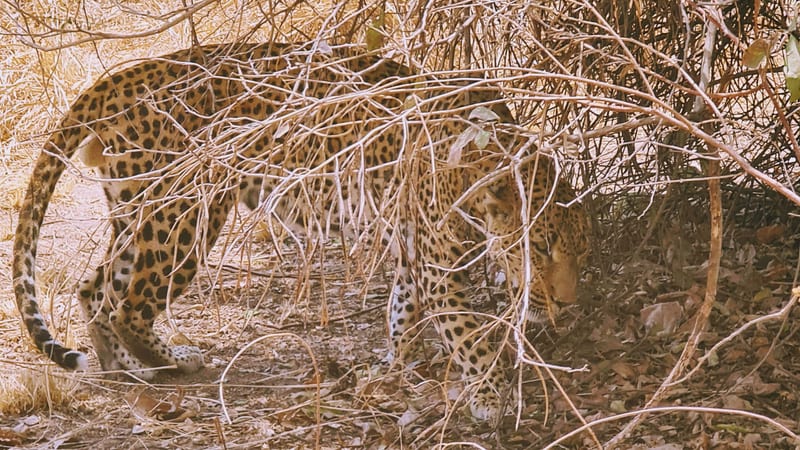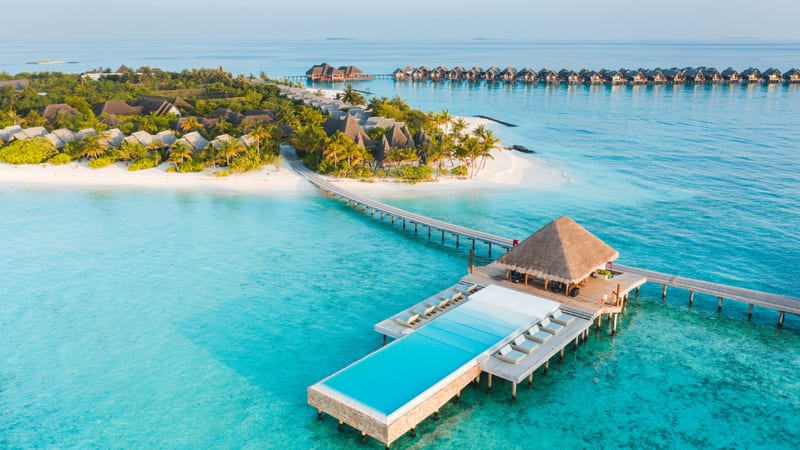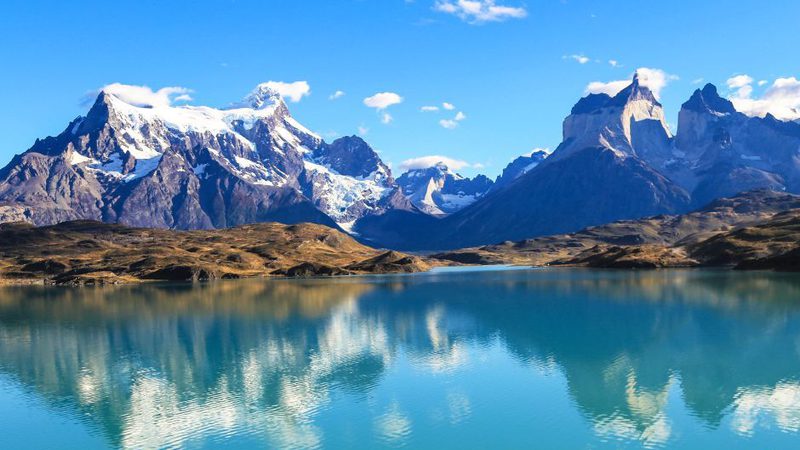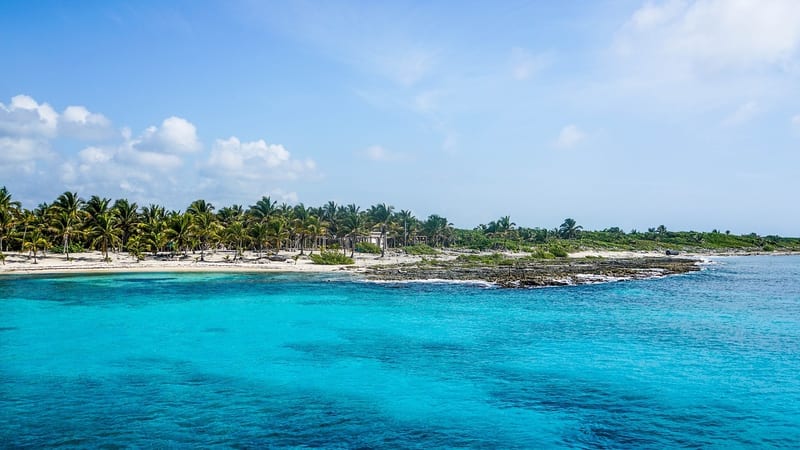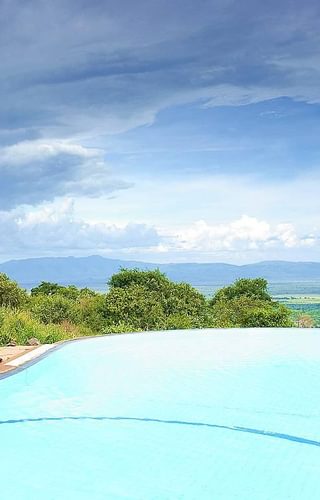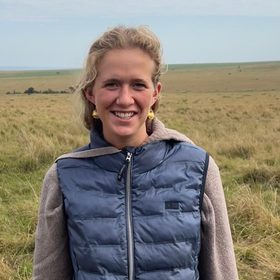Lake Manyara Serena Lodge overlooks the Great Rift Valley and the stunning Manyara soda lake.
Location: Perched on the Mto Wa Mbu escarpment, gazing down over the shimmering alkaline waters of Tanzania's Lake Manyara and the vast Great Rift Valley. Just a 15-muinute drive from the park gate and Manyara airstrip (and under two hours from Arusha), its elevated position offers sweeping views, dramatic sunsets, and direct access to Lake Manyara National Park's world of tree-climbing lions, flamingo-flocked shallows, and groundwater forests.
Rooms: Accommodation spans 67 circular two-storey "rondavels" inspired by traditional Maasai bomas, each with a conical thatch roof, thick, whitewashed walls and private veranda overlooking the escarpment. The lodge includes 21 double, 30 twin, 15 triple rooms, and 10 pairs of connecting rooms ideal for families, plus the Losimingori Suite - a roomy, elegant suite with marble bathroom, lounge, minibar and terrace with panoramic views.
Amenities: Communal life is vibrant and elegant: central dining under a cathedral-like thatched roof (the "Flamingo Restaurant"), a poolside bar by an infinity vanishing horizon pool, a lounge/library, and gift shop. Meals range from buffet to candlelit bush dinners on the escarpment, and evenings are enlivened by Maasai dance performances and storytelling. Other services include Wi-Fi in public areas, laundry and valet services, and spa/massage treatments on request.
Activities: As well as morning and evening game drives into Lake Manyara National Park (home to elephants, giraffes, hippos, flamingoes and rare tree-climbing lions), guests can take guided nature and bird walks, mountain biking, canoeing on the lake, or relaxing boat cruises. Cultural visits include nearby village tours with music and dance, cooking or Swahili lessons, archery, water-colour painting and evening educational talks led by resident naturalists.
Sustainability: Built with natural, locally acquired materials and traditional construction methods, the lodge weaves local craftmanship into both its structure and decor. Dining draws on the produce sourced from nearby communities, supporting regional food systems, and sustainability efforts include the use of inverters to reduce diesel generator reliance. The lodge also supports community healthcare programmes, educational outreach and wildlife-friendly tourism initiatives in the region.
Best places to stay in Lake Manyara
Lake Manyara Trip Inspiration
When to visit Tanzania
Find out the best time to visit Tanzania with our month by month guide.
- Best
- Good
- Mixed
- Jan
- Feb
- Mar
- Apr
- May
- Jun
- Jul
- Aug
- Sep
- Oct
- Nov
- Dec
January
January is mixed when it comes to weather, temperatures rise whilst the chance of rain and humidity increases. It is still a good time to go, as the rates are lower yet the game viewing is still excellent.
- During this time migratory herds are in the Serengeti for calving season, meaning the Ndutu plains are busy.
February
The weather remains hot with a chance of rain in February.
- Meanwhile in the Ndutu Plains the migration is still occurring.
March
March is the calm before the storm, before heavy rains and humidity builds. Visitors can take great advantage of lower rates during the low season.
- Migrating herds start to leave Ndutu, heading West towards Grumeti.
April
April experiences continued periods of heavy rain, we would advise against travel due to the conditions.
May
During may there is periods of heavy rain, we would advise against travel due to the conditions.
June
June heralds the wet season, bringing lush green vegetation which can make spotting game more difficult. It is a particularly great time for birders as parks become populated by migratory birds especially in the South.
- Migration is still in the Grumeti area, heading north.
July
July is the start of peak season, temperatures reach up to 30 degrees and the surrounding land becomes drier and spotting game is becoming easier.
- The migration is in the Northern Serengeti moving towards Kenya.
August
August is peak season, with bush land drying out game spotting becomes much easier. If you want to experience Tanzania game at its best, August is the time to travel.
- The migration still remains in the north.
September
Peak season continues in September, the Northern circuit can be very busy, if you want to avoid crowds it's best to visit the southern parks.
- The end of the migration is still in the north with herds on both side of the Kenyan and Tanzanian borders.
October
Peak season continues into October with good game viewing in the Serengeti and southern parks.
- The migration has now crossed over into Kenya.
November
November is the start of the rainy season, the rains tend to be overnight so it is still a popular time to travel. During this month you can take advantage of low season rates.
- Migration crossing over into the Serengeti can be seen a the Tanzania and Kenya border.
December
Rains continue in December, whilst the temperature and humidity start to build. Venturing out on safari is generally good, with large game still easily spotted.
- Migrating herds in the north travel south back to Ndutu.
Speak to a Tanzania expert today
and start planning your tailor-made holiday

Alistair





